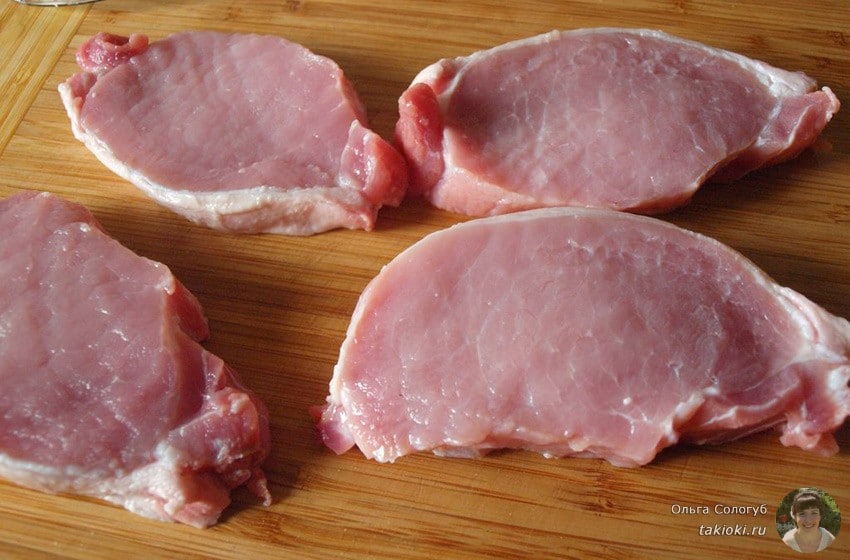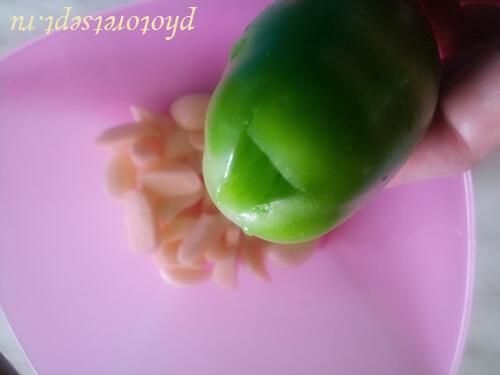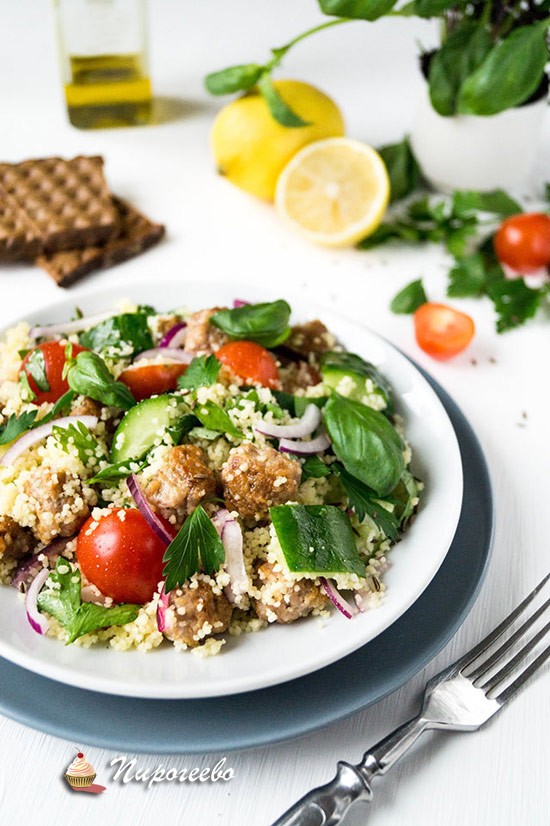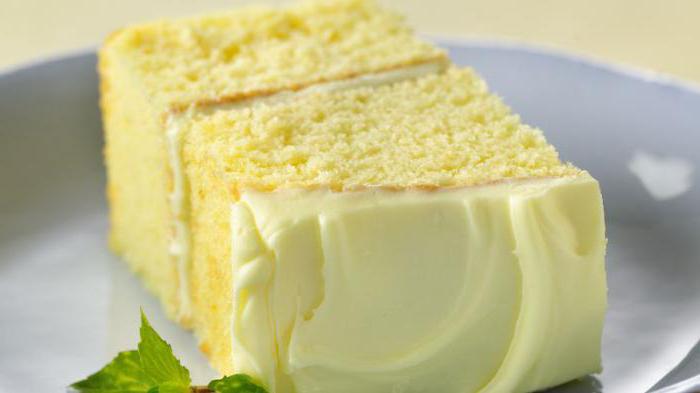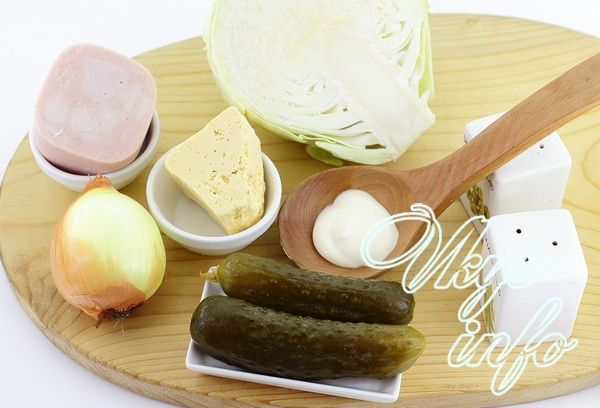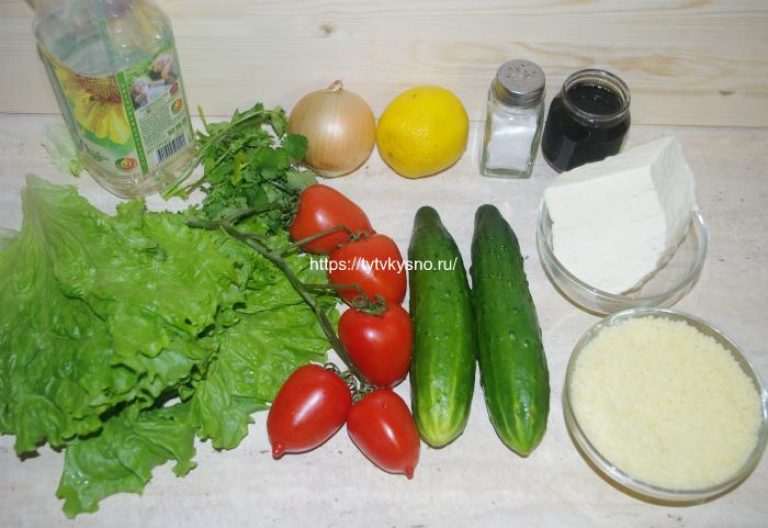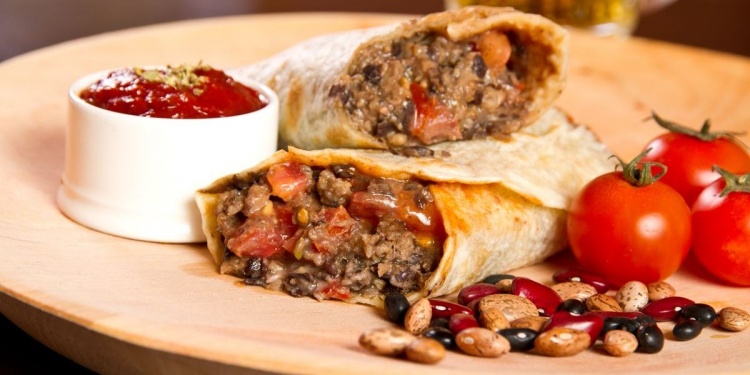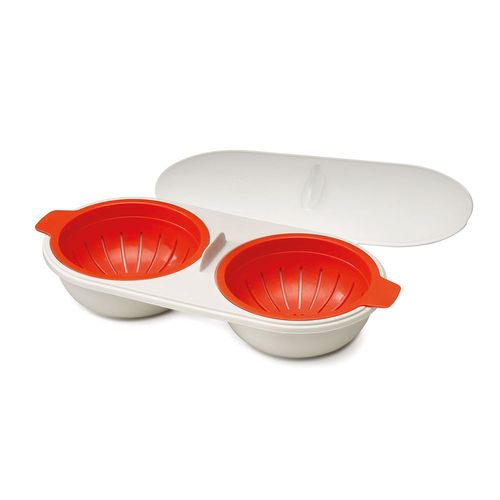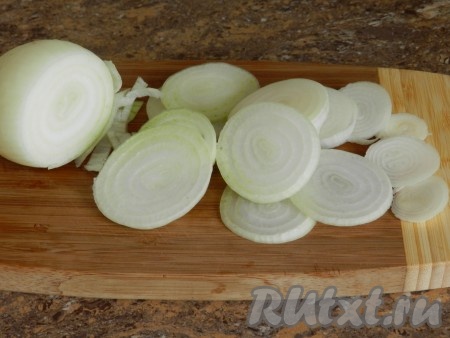Fruit Star Carambola. Star fruit carambola
A plant whose unripe fruits are considered vegetables, and mature fruits are considered fruits. This plant is carambola. In Southeast Asia, this fruit is as common as cucumbers or apples in the European part of Russia. And the taste of carambola is a mixture of flavors of apple, cucumber and gooseberry with the aroma of plum. In Europe, Thai fruit is popular not only because of taste, but also because of its unusual shape: in cross section, the yellow-ribbed fruit has a star shape. In the US, carambola is called starfruit - a star fruit.
Botanical description of carambola
The genus Carambola (Averhoa carambola) is part of the Oxalidaceae family. Common sour acid (Oxalis acetosella L.) growing in Russian forests, it is also called “rabbit cabbage”, is the closest relative of the exotic fruit.
Carambola is a tree growing to a height of 12 meters. The branches of the plant are long and drooping, covered with cirrus leaves (length 10-12 cm). Carambola flowers are small, purplish red or pink. The fruit is fleshy, the size is from the size of a chicken egg to the size of an average apple. The ripened fruit is golden or amber yellow. Its ribbed "star" shape resembles a small airship.
Everything is edible in karambola - both the skin and the pulp. The taste of some varieties resembles a juicy pea pod, others - sour mandarin, third - plums, grapes and apples at the same time, fourth - a mixture of gooseberries and prunes ... In Thailand, sour-sweet carambola is considered more delicious.
Useful properties of carambola
The fruits of carambola contain organic acids (mainly oxalic), phosphorus, calcium, sodium, iron, potassium. Vitamins are represented by beta-carotene, vitamin C, B vitamins (1,2,5), provitamin A. The therapeutic properties of carambola are still poorly understood. In Thai medicine, decoctions and infusions from the flowers and leaves of the plant are used to treat certain diseases. In India, bleeding (including hemorrhoids) is stopped with the help of fruits, and juice and dried pulp are used to combat fever. Canned carambola is used for diarrhea, to reduce bile and to relieve a hangover syndrome.
In some countries, the plant is used as a diuretic and for the treatment of eczema. In Latin America, a decoction of leaves and fruits of carambola is used as an antiemetic. The leaves of the “star fruit” attached to the temples relieve headaches, and shredded young shoots and leaves help to defeat ringworm and chicken pox. A decoction of seeds is a milk product. Crushed carambola roots, grated with sugar - a strong antidote for poisoning.
Carambola is useful for vitamin deficiency. She perfectly quenches thirst. The juice of an exotic plant whitens tooth enamel.
Is carambola dangerous

Carambola is a star-shaped warehouse of chemical elements. With all their wealth and benefits, excessive consumption fruit may cause allergic reactions. It is worthwhile to refrain from tasting carambola for people suffering from gastritis, enterocolitis, peptic ulcer of the stomach or duodenum. "Overdose" of acidic fruits leads to a violation of salt metabolism, fraught with the development of renal pathology.
There are known cases of allergies against the background of personal intolerance to carambola.
Ways to use carambola
Unripe carambola fruits are considered a vegetable. They are salted, pickled, used in side dishes and cold snacks. The ripened carambola fruit is eaten raw, enjoying a refreshing taste. Ripe carambola dishes are considered a dessert. The peel from the fruit is not cut. On a table, carambola is served sliced.
In Thailand, carambola is used to make cocktails, juices, salads, sauces and jams, and carambola is added to salads and sour flowers.
How to buy and store carambola
The fruit of carambola is very tender. When buying fruit, you need to pay attention to the absence of damage - the skin should be intact, without dents or traces of bumps. The color of the fruit can be different - from apricot to yellow-green. When buying, feel the carambola: a fresh hard ripe fruit is characterized by medium hardness.
The shelf life of carambola fruit is quite long. Ripe fruit will not lose its taste, even if it lies in the refrigerator for two weeks. When storing carambola in a dark place at room temperature, it ripens.
By the way ...
Carambola - not only a delicious fruit, but ... a means of household chemicals. For example, in Thailand, the juice of acidic plant varieties is successfully used to remove stains from clothes and to polish brass and copper.
Extreme sensitivity to low temperatures makes zinnias flyers, which are usually grown through seedlings. But then in the sowing, and in the cultivation of young zinnias, there is nothing complicated. These are hardy and easy-care plants that are easy to grow from seeds. And if you also collect your own seeds, it will turn out to be one of the most “economical” flyers in your collection. Bright baskets of inflorescences bloom the garden with a special cheerful canvas.
Eggplant - tall upright plants with wide leaves of dark green color and large fruits - create a special mood in the beds. And in the kitchen they are a popular product for a wide variety of dishes: eggplant is fried, stewed and canned. Of course, to grow a decent crop in the middle lane and to the north is a difficult task. But subject to the agrotechnical rules of cultivation, it is quite accessible even to beginners. Especially if you grow eggplant in a greenhouse.
Noble lush greenery, unpretentiousness, the ability to clean the air of dust and pathogens make nephrolepis one of the most popular indoor ferns. There are many types of nephrolepis, but any of them can become a real decoration of the room, and it does not matter if it is an apartment, a country house or an office. But only healthy well-groomed plants can decorate the room, so the creation of suitable conditions and proper care is the main task of gardeners.
In the garden medicine cabinet of experienced gardeners, gardeners must have crystalline iron sulfate, or iron sulfate. Like many other chemicals, it has properties that protect horticultural crops from numerous diseases and pests. In this article, we will talk about the features of using iron sulfate for treating garden plants from diseases and pests and about other options for its use on the site.
Many do not imagine their diet without ripe tasty tomatoes. Moreover, the variety of varieties allows you to choose the one that is most to your taste. There are varieties called salad, that is, it is better to use them fresh. These include the Honey Tomato, whose name speaks for itself. In 2007, the Honey variety was included in the State Register of the Russian Federation. “Agrouspech” offers seeds from the best breeders in the world who have passed additional testing
Retaining walls - the main tool for working with complex terrain on the site. With their help, they not only create terraces or play with planes and alignment, but also emphasize the beauty of the landscape of rockeries, the change in height, the style of the garden, its character. Retaining walls allow playing with raised and lowered platforms and hidden areas. Modern dry or more solid walls help to turn the shortcomings of the garden into its main advantages.
A salad with chicken breast and vegetables without mayonnaise can be both a light snack for the festive table, and the main dish for those who follow their figure or decide to part with extra pounds. To make the chicken breast tender and juicy, pre-marinate it in spices and oil, and then quickly fry it in a very hot frying pan in vegetable oil. If there is a wok - great, if not, then a regular skillet with a non-stick coating will do.
There were times when the concepts of "tree-garden", "family tree", "collection tree", "multi tree" simply did not exist. And to see such a miracle was possible only in the economy of the “Michurinites” - people whom the neighbors wondered at while looking at their gardens. There, on the same apple tree, pear or plum, not only varieties of different ripening periods were ripened, but also various colors and sizes. Not many despaired for such experiments, but only those who were not afraid of numerous trial and error.
On the balcony, in the apartment, on the summer cottage - everywhere enthusiastic people find a place for their favorites. It turns out that growing flowers is a very troublesome affair and obeys only endless patience, hard work and, of course, knowledge. Providing flowers with varied and wholesome nutrition is just one, not the biggest, but the problem is on the difficult and fascinating path of the grower. One of the most responsible and difficult work to care for indoor plants is their transplant.
A unique combination of flowers similar to chrysanthemums with fleshy original leaves attracts attention to aptenia. But her ability to tirelessly and rapidly grow, the dazzling colors of both greenery and flowers are the main advantages. And although the plant has long been transferred to mesembryanthemums, aptenia still remains a special star. Hardy and unpretentious, but at the same time similar to a beautifully flowering star, it is rapidly gaining popularity.
Pollock fish soup - light, low-calorie and very healthy, it is suitable for a vegetarian menu (pesketarianism) and light fasting. Pollock is one of the most common and affordable fish that can be found on the shelves of almost any store. This fish is from the cod family, the meat is dense, white. Pollock does not fall apart during cooking, there are not many bones in this fish, in a word, a suitable fish for both beginner home cooks and experienced economical housewives.
The front garden is the face of the garden and its owner. Therefore, for these flower beds it is customary to choose plants that are decorative all season. And in my opinion, perennials of front gardens blooming in spring deserve special attention. Like primroses, they bring us special joy, because after a dull winter, as never before, I want bright colors and colors. In this article, we offer to get acquainted with the best decorative perennials that bloom in the spring and do not require special care.
The climatic conditions of our country, unfortunately, are not suitable for growing many crops without seedlings. Healthy and strong seedlings are the key to a quality crop, in turn, the quality of seedlings depends on several factors: Even healthy-looking seeds can be infected with pathogens that remain on the surface of the seed for a long time, and after sowing, if they are in favorable conditions, they are activated and affect young and immature plants
Our family is very fond of tomatoes, so most of the beds in the country are given specifically for this crop. Every year we try to try new interesting varieties, and some of them take root and become loved. However, over many years of gardening, we have already formed a set of favorite varieties that are required to be planted in each season. We jokingly call such tomatoes “special-purpose” varieties - for fresh salads, juice, pickling and storage.
Coconut pie with cream - "kitchen", or German coconut pie (Butter milch shnitten - soaked in milk). Without exaggeration, I will say that this is an incredibly delicious cake - sweet, juicy and tender. It can be stored for a rather long time in the refrigerator, on the basis of such a biscuit in Germany cakes with cream are prepared. The recipe is from the “Guests on the Doorstep!” Category, since usually all the ingredients are in the refrigerator, and it takes less than an hour to prepare the dough and pastries.
The snow has not yet melted completely, and the restless owners of suburban areas are already in a hurry to evaluate the front of the garden work. And here it is true that there is something to do. And, perhaps, the most important thing that you need to think about in early spring is how to protect your garden from diseases and pests. Experienced gardeners know that it is impossible to let these processes drift, and delaying and postponing the processing time for later can significantly reduce the yield and quality of the fruit.
In the slice, the fruit has the shape of a star. Carambola fruit contains a huge amount of organic acids. It is also rich in vitamins C, B1, B2 and B5, calcium, phosphorus and iron.
The fruits are used in the preparation of second courses, salads and desserts, salt and pickle. In Asia, flowers are used in folk medicine.
What it is?
The Latin name for carambola is Averrhoa carambola. In the wild trees reach a height of 5 m. They have a very dense crown with oppositely located oval, slightly pointed leaves.
Leaves soft and smooth to the touch of a dark green color. They are very sensitive, like sunlight, so they get together at night.
A photo
In the photographs you can see how this fruit grows.

Home Care
At home, there is also the opportunity to grow carambola.
After the purchase
After acquiring carambola seedling, he needs to provide comfortable conditions.
Pot established in place of constant growth. This place should be sunny, but direct rays should be avoided. Within 10-14 days he will get used to a new place. After that, the seedling can be transplanted into a container with new soil.
Watering
In the summer months it needs abundant watering. In winter, reduce the amount of moisture. The tree does not like excessive soil moisture.
It is worth making sure that there is no stagnation of water in the pan. Excessive watering will result in acidification of the soil and decay of the root system.
Drying out soil also worth avoiding. A lack of moisture will affect the appearance of the plant. The leaves will lose their luster, fade and fall off. With a constant lack of moisture, the plant will die.
Since carambol comes from the tropics, it needs high humidity. Spraying foliage should be done 3-4 times a week.
Bloom
After 3-4 years the tree begins to bloom, the first fruits appear.
Female and male flowers bloom on the tree.
Basically they are self-pollinating, some varieties require artificial pollination.
Can bloom a tree up to several times a year. Ripening occurs in September or October.
Crown formation
Krone carambola needs to be trimmed periodically. This is done to give the tree a decorative look. When trimming excess branches, side shoots appear, the crown becomes thicker.
Dried twigs are also periodically removed.
Soil
Light soil for planting, with good air traffic. For this, ready soil is mixed with vermiculite in equal parts.
Landing and transplanting
Young tree carambola is transplanted annually in the spring, at the end of April.
A more mature tree does not need frequent transplanting, only as necessary.
Breeding
The easiest way to reproduce is cuttings. To do this, a twig is cut and put in a vessel with water until the roots appear. After their appearance, the stalk is planted in a separate container. Drainage is necessarily laid at the bottom.
Another way to reproduce is seed. They are sown in February in peat land or moss. Seeds must be taken fresh, stale will not sprout. Sown seeds are covered with a film.
Growing
Plant for good growth fed in the spring and summer months. For feeding, complex fertilizer is purchased in a specialized store.
In order to avoid overdose, it is necessary to strictly adhere to the instructions. Since a glut of fertilizers can adversely affect the condition of the plant.
Carambola - photophilous plant. For proper development, a pot with a tree is placed in a well-lit place.
For permanent growth, windows facing east are suitable. In the morning hours the tree will receive a sufficient portion of sunlight, and the midday rays will not burn the delicate foliage.
Temperature
Most comfortable will be at a temperature of 22-27 degrees in the summer months. In the winter months, the plant should not be cold. The mark on the thermometer should not fall below 17 degrees.
Diseases and Pests
 With excessive moisture or stagnant water soil acidification and root decay may occur.
With excessive moisture or stagnant water soil acidification and root decay may occur.
For the same reason, fungal infections are affected. You can save a tree only by replanting in new soil.
Of pests the most common nematode and fruit fly. To control pests in the store you need to buy pesticides, process the plant. When processing, you must follow the safety rules.
Carambola is quite easy to grow at home.
Benefit and harm
Most often, the fruits are removed from the tree unripe. But the most useful properties are freshly picked ripe fruits carambola.
Vitamin C strengthens the body, B1 - heals the nervous system, B2 - strengthens nails and hair, makes the skin radiant.
Use of carambola (fruits, flowers and leaves). Fruit used in traditional medicine. For example, a fever and a headache are treated with a decoction.
Flowers used as a hemostatic agent. Decoctions and tinctures are used as diuretics and for the treatment of infectious diseases.
In different countries, fruit is used to treat hemorrhoids, vomiting, anesthesia, and even to relieve a hangover. Candied and dried fruits are used as a choleretic agent.
Leaves treat skin diseases such as lichen and smallpox. A decoction of the roots is used for intoxication. And the seeds are used as a sedative. Fruits have the ability to lower blood pressure, and normalize blood sugar.
Since the fruit is rich in acids, it is contraindicated for people suffering from gastric diseases. These include increased acidity, gastritis, ulcers.
Indications and contraindications

- Due to the extensive presence of B vitamins in fruits, carambola is used as a normalizer of the nervous system, digestive organs and thyroid gland, a stimulator of hormone production and an improvement in blood composition.
- A large amount of ascorbic acid in carambol, when used, causes the strengthening of the body's immunity, the mobilization of protective systems.
- The healers of the Asian regions in which this fruit grows, recommend it as a remedy for treatment:
- headache,
- hemorrhoids, diarrhea,
- hypertension
- smallpox and skin diseases.
- Also used for the preparation of diuretics and antiemetics, antidotes for poisoning.
Contraindications This fruit is based on the fact that it has a high content of oxalic acid. Therefore, to limit the use of carambola should be in cases:
- acute gastritis and stomach ulcers,
- enterocolitis
- duodenal ulcers,
- the presence of renal pathologies.
Important! In cases of excessive use of carambola, intoxication is likely to occur, the signs of which will be: vomiting, general weakness, numbness and insomnia. It should be remembered that eating any fruit should be reasonable.
How to understand what is ripe? How to choose?
In terms of visual maturity, carambola is similar to a banana. The unripe fruit will have a greenish tint, it is harder to the touch, and the ribs have a clear separation. The fully ripened carambola is softer, the ribs are fleshy and yellow in color, sometimes with a brown stripe at the edges. By taste, a ripe fruit is sweetish-sour and watery. In an unripe taste, the acid is more and it is more like a vegetable than a fruit.
The question of choice for yourself, respectively, lies in your taste preferences. If you like sweet fruit more, then you should take a fully ripened carambola. If "sourness" is preferable, then you can choose a slightly immature one.
How to eat carambola?
Carambola is an exotic fruit with a very wide flavor range. Therefore, the use in cooking is very extensive:
- As an independent dessert, in raw form; for ice cream - with syrup or jam.
- In the preparation of marmalade, jelly or puddings.
- Unripe fruit is used as a pickled, salted or stewed vegetable.
- Sliced \u200b\u200band fried in oil - as an additive to meat and fish dishes.
- Due to its watery composition, the crushed fruit is great for adding to the sauce.
- Juice is an ingredient in many cocktails based on pineapple or orange juice, giving unusual taste.
She will bring not only exotic to the house. Its fruits are rich in vitamins and organic acids. In addition, ripe fruits can be eaten raw, as well as decorate salads and cocktails.
More information on carambol in the following videos.
Beauty and Health Health Nutrition
The birthplace of carambola is Southeast Asia. There, this exotic fruit is eaten just like we eat apples or cucumbers. And to taste, it is something in between an apple, a gooseberry and a cucumber. In Europe, carambola is also quite popular due to its unusual shape. The fact is that this yellow-green ribbed fruit in cross section has the shape of a star. Therefore, carambola is also called star fruit. It is enough to cut it across, and the decoration for any table is ready.
Carambola has a sweet and sour refreshing taste. and contains a lot of fluid, so it’s a great way to quench your thirst.
In different countries, carambola has different names, among them “cannon”, “starfruit”, “gherkin”, “fifth corner” and “star apple. This fruit grows in India, Ghana. Indonesia, Polynesia, Malaysia, Sri Lanka and other countries. Carambola is also grown in southern America, the state of Florida, and the Hawaiian Islands. It is brought to Russia from Brazil, Israel and Thailand.
Composition and benefits of carambola
One of the benefits of starfruit is its low calorie content.100 g of fruit accounts for only 34-35 kcal. The fruits are quite a lot of calcium, phosphorus, iron, sodium, magnesium and potassium. It also contains a lot of vitamin C, thiamine, riboflavin, beta-carotene and pantothenic acid. Not much is known about the benefits of carambola for human health. However, the composition of the fruit speaks for itself - it is an excellent source of vitamins and minerals.

Thiamine (Vitamin B1) supports the normal functioning of the nervous system. There are no reserves of this substance in the body, so you need to constantly receive it with food. This is especially true for lovers of junk food (flour, sweet, etc.), children during growth and women over 50. With a sufficient content of thiamine in the body, a person feels alert, gets tired less, is not prone to nervousness and irritability. Vitamin B1 also helps to improve the digestive system and appetite.
Riboflavin (Vitamin B2) is involved in the formation of red blood cells and antibodies.helps regulate the reproductive functions of the body and the thyroid gland. Also, this substance is necessary to maintain healthy skin, hair and nails.
Pantothenic acid (vitamin B5) regulates the metabolism of fats, carbohydrates, synthesizes vital acids, cholesterol, histamine, hemoglobin. It stimulates the formation of adrenal hormones. Maintaining a normal pantothenic acid level in the body is an excellent way to prevent diseases such as arthritis, heart disease, colitis and allergies.
Much is known about the importance of minerals such as calcium, magnesium, phosphorus and others. All of them are necessary to maintain the body in good condition. And in our time, unfortunately, the body often loses one or another useful substance. Therefore, carambola is a great way to help your body.

In Asia, carambola is used for weak immunity, vitamin deficiencyheadaches, fever, colic and constipation. Pretty much starfruit and oxalic acid. Of course, it is also useful for humans, but people with kidney or digestive diseases should not get carried away with this fruit. But in Sri Lanka, for example, people very successfully use the acid contained in carambol to remove stains from clothes. Also with the help of starfruit polish copper and brass.
How to choose carambola
Asians most value the not-so-ripe sour fruits, whose narrow ribs are clearly separated. But lovers of sweet fruits need to look for a light yellow or yellow-green carambola, with fleshy side ribs and a dark brown strip on them. In such fruits there is a very small acidity, and in smell they slightly resemble jasmine flowers. It is almost impossible to describe the taste of carambola, someone compares it with a cucumber and gooseberry, someone with grapes and plums, and some clearly feel the taste of orange and apple. Of course, it is best to try this amazing fruit and find something different in its taste. Unfortunately, in Russian stores you cannot find starfruit ripened to the end on a tree. Like many other fruits, they pluck it and send it to us still immature, and it ripens already on the road. But otherwise you just can’t bring the carambol. But it can be stored in the refrigerator for up to 3 weeks.
How to eat carambola
We already know that star fruit can be used to decorate salads, cocktails or ice cream and that it is delicious in itself. However, this is not all of its advantages. In different countries, this fruit is used to prepare a variety of dishes. The most common carambola food will add a mysterious exotic taste and aroma. In Sri Lanka, carambola is eaten raw, directly with the peel. But the Chinese are very fond of cooking fish with starfruit. A delicious sorbet is made in Hawaii by mixing the juice of carambola and lemon and adding gelatin to it. In general, carambola juice can be added to cocktails, mixed with orange, pineapple or mango juice.
You can make carambola sauce that goes well with meat. To prepare it, you need to mix crushed starfruit with horseradish, celery, vinegar and spices. And you can shift the pieces of stew into thin pieces of carambola. It will simultaneously give an unusual taste to the dish and decorate it.
Unripe carambola is used as a vegetable. You can stew it with other vegetables and get a delicious stew. It is also pickled and salted. All kinds of mashed potatoes, puddings, jellies, juices and other dishes are made from sweet fruits. In South Asia, sour carambola flowers are also used for food, adding them to salads.
Return to the beginning of the section Healthy body
Back to the beginning of the section Beauty and Health

Resting in Southeast Asia, you can taste a lot of unusual fruits that can give new taste sensations. One of these fruits can be safely considered carambola. As soon as this fruit is not called - cannon, star apple, tropical star or starfruit. Carambola is a traditional product for residents of Thailand, India, Indonesia and other countries of Southeast Asia, while it remains an exotic fruit for our compatriots.
How does carambola grow?
The height of the carambola trees reaches 3-5 m, the crown is covered with complex acacia leaves, reaching 30 cm in length.
Cannon leaf plates have an amazing feature: when there is a lack of lighting or when touched, they fold like butterfly wings. Such a reaction of the plant is explained by the belonging of carambola to the Sorrel family. Ordinary sour, grown in the suburban areas of Russians, is a direct relative of exotic starfruit.
What does carambola look like?
Carambola blooms several times during the year, covered during flowering with delicate pink-lavender flowers. 2-2.5 months after flowering, the plant forms juicy, crisp, ribbed fruits, which contain several flat seeds. The length of the fruit varies from 5 to 15 cm. The easiest way to imagine the shape of carambola is by looking at the cross section of the fruit, which forms almost regular five-pointed stars.

Carambola season in thailand
The carambola season lasts from May to August. Residents of Russia can enjoy fresh starfruit not only in the homeland of the plant. Star fruit is imported into our country year-round from Brazil, Israel and Asian countries.
If you want to please your friends and family with an unusual fruit, then bring carambola home from Thailand. And how to export fruit from Thailand, read in my separate article.
Interesting fact! Fans of exotic plants can try to grow carambola from seeds at home. Unlike other tropical representatives of the flora, the starry apple needs abundant watering, but can be content with the meager lighting characteristic of our winters.
The taste of carambola
A lot of controversy is going on over the true taste of carambola. The difference of opinion is due to the fact that the taste of unripe and moderately ripe fruits is very different. To get on the shelves of Russian supermarkets, starfruit is removed from the trees in an immature state. Such fruits have a sour taste and resemble a vegetable rather than a fruit.
To the best of ripe fruit, it contains more sugar and surprises with a sweet and sour or sweetish taste that causes associations with several fruits that are familiar to us. Those lucky enough to taste exotic carambola compare it with gooseberries, apples, plums, grapes, oranges and even cucumbers. In one fruit, several taste notes are heard at once. Sweet and sour fruits contain a lot of liquid and are an excellent way to quench your thirst.
Note! The energy value of starfruit is small - 100 g of fresh fruits contains 35-40 calories, which makes carambala indispensable for those who adhere to a healthy lifestyle and care about the slimness of the figure.
Useful properties of carambola
The beneficial properties of any fruit or vegetable are fully manifested if the fruits are ripe and ripped off relatively recently. Therefore, you should not count on tangible benefits when using carambola, purchased in a store near the house. But tourists from Thailand and other Asian countries were more fortunate, as they can fully not only enjoy the true taste of a tropical star, but also feel its healing power.
Carambola has the following beneficial substances:
ascorbic acid - strengthens the immune system and mobilizes the body's defenses; thiamine (vitamin B₁) - is responsible for the functioning of the nervous and digestive systems; riboflavin (vitamin B₂) - normalizes the thyroid gland, improves the appearance of the skin, hair and general blood composition; pantothenic acid (vitamin B₅) - stimulates the production of hormones by the adrenal glands, normalizes blood cholesterol and hemoglobin, is a preventive measure for the development of allergies, colitis and heart diseases; iron, phosphorus, potassium, calcium, sodium; cellulose.
Formal studies on the benefits of carambola have not been conducted, however, Asian healers are widely used in the treatment of leaves, flowers and fruits of this fruit. Star fruits are used to treat:
headache and dizziness; diarrhea and hemorrhoids; hangover syndrome; gall bladder diseases; hypertension chicken pox; skin diseases.

Harm carambola
stomach ulcer and duodenal ulcer; gastritis; enterocolitis; severe renal pathology.
From one fruit there will not be much harm, but with an exacerbation of the listed diseases it is worth completely abandoning the star apple.
Important! In rare cases, carambol intoxication may occur. Its symptoms are insomnia, numbness, hiccups, vomiting, or muscle weakness. Symptoms may appear from 0.5 to 14 hours after consuming starfruit.
How to choose carambola?
In green starfruit, the narrow ribs are clearly separated. Sweet ripe fruits are endowed with fleshy ribs with a dark brown stripe, which indicates the full ripening of carambola on a branch. To the extent ripe fruits contain little acid, giving piquancy and a refreshing taste, and the smell is remotely similar to the aroma of jasmine flowers.
When grown for industrial purposes, carambola is removed in an unripe state in order to be transported to customers thousands of kilometers away without loss of consumer properties. Unripe fruits are pale green or yellowish. They can be stored for a long time (up to 3 weeks) in the refrigerator. Green cannon can ripen at room temperature, but its taste will not be as sweet as that of a ripe fruit ripped from a tree.
When buying carambola in a Russian supermarket, the buyer has no choice, so you have to be content with unripe fruits. A trip to Thailand allows you to enjoy the great taste of stellar apples, which are rich in local markets. The main thing is to find fruits with a dark brown strip on the ribs, then the wonderful taste of ripe starfruit is guaranteed.
How to eat carambola?
Star apple is used primarily for decorating cocktails, various desserts and salads, since star wedges look elegant and give any dish a finished look. However, the use of carambola in cooking is not limited to this. The inhabitants of Asia prepare all kinds of dishes with starfruit:
Carambola juice is part of many cocktails, emphasizing the exquisite taste of drinks. Unripe fruits are often used as vegetables - they can be salted, stewed or pickled. Fresh fruits are eaten raw or as a dessert. A gourmet dessert is carambola, boiled in syrup to a semi-soft state - a rich aroma is unlikely to leave anyone indifferent. Sweet carambola is used to make jelly, marmalade, puddings and jams. Chinese cooks use tropical star plates in fish and meat dishes. When ground, carambola can become part of the sauce.

Interesting! The immature fruit pulp serves as an indispensable tool for Thai housewives to shine copper and brass products. Oxalic acid, which is part of carambola, also helps remove stubborn stains from clothing.
The ripe carambola fruit is edible entirely along with the peel. First, the fruit should be washed with running water, removing dirt from the hollows on the peel, and cut with transverse plates 0.5-1.5 cm wide. To give the dish a representative appearance, you can cut brown strips from the ribbed parts of the fruit and remove the seeds.
After visiting Thailand, tourists can enjoy the strange fruits of tropical trees. Exotic nature is rich and diverse, and unusual fruits can surprise anyone. Ripe carambola amazes with the richness of taste associations and perfectly quenches thirst, and any salad or cocktail decorated with translucent stars takes the form of a culinary masterpiece. You can learn about other exotic fruits from my article Fruit of Thailand.
Carambola can be grown at home. The plant is well propagated by seeds. For planting, you must select a ripe fruit of the variety you like in the supermarket. The plant is easy to care for even a beginner. Look at the photo, what an unusual beautiful shape the fruit has. A tropical star adorn dishes and are widely used in cooking.
Varieties and varieties of carambola
The birthplace of fruit is considered Asia. At home, it is as popular as cucumbers or apples. In the heat, fruit can quench your thirst, as the pulp is very juicy and has a sweet and sour taste. Carambola was acclimatized in Brazil, Israel, Thailand, and Hawaii. As soon as they do not call carambola: a tropical star, kamrak, illicium, cannon, etc. On the territory of Russia, a relative of this plant grows - sour acid.

They eat raw carambola and also prepare desserts from it
Carambola is an evergreen tree up to 12 m. Fruits are eaten with peel. Moreover, different varieties differ in taste and resemble our plums, an apple with grapes, gooseberries with the scent of plums. Locals value sour fruit varieties. Unripe fruits are used as vegetables, and ripe ones as a dessert. The leaves of the tree taste like spinach, they are widely used in Indian cuisine. The flowers are used as a spice, added to salads.
- Fruits contain a large amount of vitamins and acids, macrocells. Fruits, flowers and leaves are used as a medicinal plant.
- Fruit juice can be used as bleach to remove stains from clothing.
- Pulp can be polished products made of copper or brass.
- Kamrack juice can relieve hangover and thirst.
- If the fruits are boiled in sugar syrup, they become very fragrant.
- The fruits are pickled, salted, added to meat dishes and stews, decorated with cocktails.

Carambola pulp is very juicy and healthy.
Landing
It does not matter where you got the carambola fruit - at a local store or brought from a foreign trip. The most important thing is to choose a ripe fruit without damage and carefully take out the ripe seeds from the pulp. Ripe carambola has a bright yellow color. Pay attention to the ribs of the fruit. Fleshy indicate a sweet fruit, and narrow usually come with sourness. Smell the fruit, the more pronounced its aroma - the ripe it is. On the Russian shelves there is no fully ripe carambola, since the fruit is imported from afar and it is simply impossible to bring ripe marketable fruit. Carambola matures for several weeks on the shelves or in the refrigerator.

With proper care, tropical fruits can be grown on the windowsill.
Seeds lose their germination very quickly, so they need to be planted without delay. The seeds are washed with warm water and soaked for 10 hours. After soaking, the seeds are sown in individual pots with universal soil mixture and vermiculite. Expanded clay is always laid at the bottom - it will provide drainage. Seeding depth is 1 cm. Pots are placed in a small greenhouse. The germination time of each seed is individual, usually it takes from one week to a month. Young bores are provided with backlighting so that daylight hours are 13 hours.
If you planted the seeds in a common box, then when the third leaf appears, seedlings must be planted in individual containers. Later planting injures the root system and reduces the percentage of plant survival.
Young plants must be sprayed with heated water to ensure high air humidity.
Tip. The fruit of carambola contains oxalic acid. Therefore, people with gastrointestinal tract problems should eat carambola in small quantities so as not to cause an exacerbation of the disease. Excessive intake of fruits can disrupt salt metabolism in the body and lead to renal pathologies.
Care, fertilizer and top dressing
Carambola needs minimal care. Since the plant is able to bloom and set fruits all year round, it needs a lot of nutrients. Top dressing is carried out once a quarter. Use complex fertilizers for plants. With a lack of iron, the plant may develop chlorosis.
The plant practically does not need pruning. Basically, pruning is done in order to form a crown.
Carambola needs an annual transplant into a larger pot. The soil mixture should have a weak acid reaction, in no case alkaline. A drainage layer is required at the bottom of the tank to drain excess water.

Carambola seeds
The plant loves the sun, but direct sunlight from the southern windows can cause leaf burns. Cannon feels bad in a dry climate: it is necessary to maintain humidity, spray the plant, especially on hot days. The plant has one feature - at night its leaves are folded, but if this happened during the day - you need to sound the alarm. A seedling needs first aid, something is going wrong. With a lack of moisture in the soil, the seedling can completely dump the entire leaf apparatus. When watering, it is important to maintain balance, since excess moisture impairs root respiration and promotes the formation of putrefactive diseases. The plant may die.
The optimum growth temperature for a tree in summer is from 20 0С. In winter, it should not fall below 15 ° C.
Tip. Carambola, grown from seed, blooms in the third or fourth year of life.
Breeding
The plant is propagated in several ways:
- vaccination;
- seeds.
Vaccination allows you to get a tree with fruits that have certain taste characteristics. In our conditions, this is almost unrealistic. For our climatic zone, only seed propagation is available. Growing cannon from seeds, it is impossible to predict what kind of taste the fruits of the seedling will have. Sweet or sour. Peel color can also vary from yellow-green to apricot and brown. Therefore, several seedlings are grown at once, and when the plant begins to bear fruit, they leave a specimen with sweet fruits.

Carambola seedlings
Diseases and pests of carambola
Since carambola is new to our latitudes, it has not yet gained "popularity" among pests and diseases. The plant can be damaged by a kidney nematode; cases of damage by a fruit fly have been noted. Excessive watering or stagnation of water in the pan contributes to the development of fungal diseases: anthracnose or phylosticosis. An alkaline soil reaction can cause chlorosis in a seedling.
The fruit of carambola: video
Carambola at home: photo






